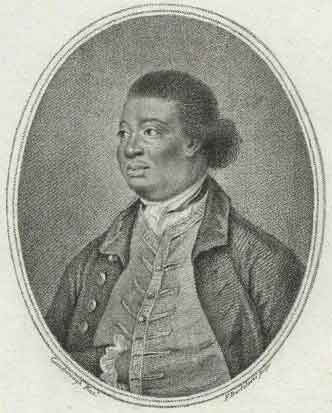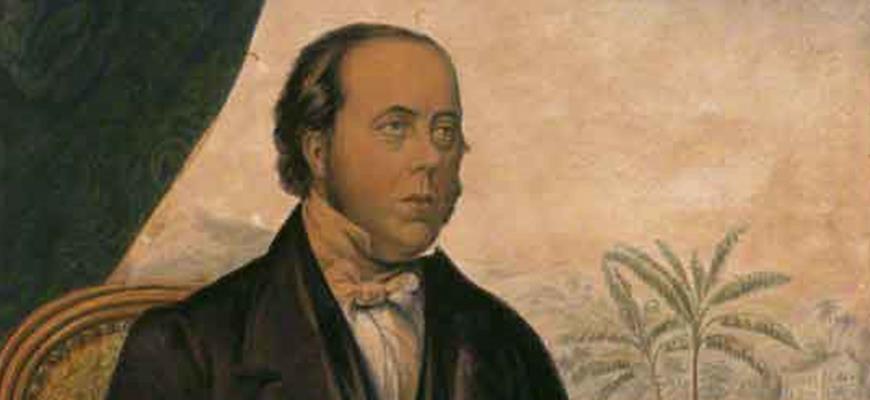Slavery is the system in which some people owned others as personal property and forced them to work for free. From the 16th to 19th century, Britain enslaved and transported millions of people from Africa to the West Indies. Northamptonshire has a long history of slave ownership as well as fighting for the abolition of slavery.
The slave trade
 Britain became widely involved in the slave trade in the mid-17th century due to the sugar plantations in its colonies. Growing sugarcane was labour intensive, so enslaved Africans were transported to the West Indies. They were sold to the highest bidder and forced to work long hours on the estates for free. In what became known as the triangular trade, sugar and other crops harvested by slave labour were then shipped to Britain. Completing the triangle, factory goods were taken from Britain to Africa to trade for further slaves.
Britain became widely involved in the slave trade in the mid-17th century due to the sugar plantations in its colonies. Growing sugarcane was labour intensive, so enslaved Africans were transported to the West Indies. They were sold to the highest bidder and forced to work long hours on the estates for free. In what became known as the triangular trade, sugar and other crops harvested by slave labour were then shipped to Britain. Completing the triangle, factory goods were taken from Britain to Africa to trade for further slaves.
From the 16th to 19th century, Britain enslaved and transported over three million Africans. The slave trade became Britain’s highest earning trade. Many people profited, including slave ship owners, slave traders, bankers, and plantation owners.
In Northamptonshire, several wealthy families were plantation owners. The Isted family of Ecton Hall owned a sugar and rum plantation in Jamaica from 1694 to 1766. When they sold the estate, it was listed with 124 slaves. Similarly, the Symes family of Ufford Hall owned a sugar, rum, and molasses plantation in Jamaica until the 1820s. The estate used over 175 enslaved people. Sir John Willes, who built Astrop House, also jointly held a plantation in Antigua for several years.
Enslaved servants
Enslaved Africans were brought to Britain to work in family homes too. For rich families in the 17th and 18th centuries, black servants were a symbol of wealth and status. Some were free and paid wages, but others were slaves and sold as property.
Enslaved servants were removed from their countries and separated from their families. Often, they were converted to Christianity and given new names as their owners ‘civilised’ them. While they were still slaves, some were also treated fairly well. Lady Rockingham of Rockingham Castle paid for fine clothes and a ‘little mare’ for her page Dobuss in 1690. Similarly, Charles the Black received elegant clothing, laundry services, and a nurse’s care at Boughton House. This can be seen in a portrait of him with his mistress, Lady Mary Churchill, the Duchess of Montagu. Another painting at Althorp shows Caesar Shaw, an enslaved servant to the Spencer family. He is wearing fine clothing but is also in a servile position beside the dog.
Some enslaved servants gained their freedom later in life. James Chappell served the Hattons of Kirby Hall from the age of 15. In 1672, he saved the lives of Sir Christopher Hatton and his three daughters from an explosion. When Sir Christopher died in 1706, he left £21 a year to James, which allowed him to live as a free man in Gretton with his wife.
Very few black servants were given a tombstone when they died. However, there were exceptions. In Blatherwycke, the gravestone for Anthony Williams records that he saved his master from drowning in a local lake. Another in Culworth is dedicated to Charles Bacchus. Charles’ headstone describes him as:
a faithful servant and a Good Man […] belov’d and Lamented by the Family he Serv’d.
The abolition movement
Resistance to slavery occurred in Africa, on the ships, and on the plantations. Small-scale defiance and larger revolts helped make slavery more dangerous and less profitable for those involved. It also eventually helped sway public opinion against slavery.
 The abolition movement was slow to develop. However the increase in the number of enslaved or formerly enslaved people in Britain, such as Ignatius Sancho, encouraged the movement.
The abolition movement was slow to develop. However the increase in the number of enslaved or formerly enslaved people in Britain, such as Ignatius Sancho, encouraged the movement.
Ignatius, depicted to the right, fled slavery and became a butler at Boughton House. When the Duchess of Montagu died, she left him £70 and an annual allowance. Ignatius went on to become a grocer and compose music, poetry, and plays. He also wrote to many important people and became known as a man of letters. His letters, exposing the horrors of slavery and arguing for abolition, were published after his death. They became a source of inspiration for the abolition movement.
Most early abolitionists were Nonconformists. The Quakers started the abolition movement in Britain, using their meeting houses for rallies and talks. From the 1770s, many abolitionists visited the Northampton Quakers to speak against slavery.
The first legal challenge to the British slave trade took place in 1765 and soon after, slavery was repeatedly contested in the British courts.
In 1787, the Society for Effecting the Abolition of the Slave Trade was formed. The society campaigned against slavery and became a large political movement. Its supporters educated the public and boycotted slave-grown produce. In Parliament, William Wilberforce regularly introduced bills to end slavery. Another group, the Sons of Africa, were made up of former slaves and worked alongside the Society. Local groups also appeared, such as the Kettering Society. Its members were very active, sending out anti-slavery journals and repeatedly petitioning Parliament to end slavery.
 Several Northamptonshire Baptists also fought against slavery while on missions abroad. Both John Smith of Rothwell and William Knibb of Kettering were imprisoned for encouraging slave revolts in the West Indies. John’s death brought attention to the cause and William later toured Britain campaigning for abolition.
Several Northamptonshire Baptists also fought against slavery while on missions abroad. Both John Smith of Rothwell and William Knibb of Kettering were imprisoned for encouraging slave revolts in the West Indies. John’s death brought attention to the cause and William later toured Britain campaigning for abolition.
The end of slavery
In 1807, Parliament ended the slave trade throughout the British Empire. In 1833, slavery itself was abolished and the Slavery Abolition Act freed 800,000 enslaved people. However, it also paid slave owners for the loss of their ‘property’. The Slave Compensation Commission paid out £20m (worth over £16bn today) to 46,000 British slave owners.
Several plantation owners who lived in Northamptonshire received compensation. For example, Eliza Mary Markham of Northampton and her sisters were awarded £2,194, eight shillings and threepence for 104 slaves. They had jointly owned a sugar and rum plantation in Jamaica. Similarly, Susanna Ruth Yearwood of Islip received £62, two shillings and ten pence for four slaves in Barbados.
The enslaved people themselves received nothing. Indeed, former slaves were required to work as unpaid ‘apprentices’ for four years as further compensation to their former masters.
On 1st August 1838, enslaved people in the British colonies were finally free. There were celebrations in Northamptonshire, as well as the West Indies. ‘Emancipation Day’ is a national holiday in many Caribbean countries today.